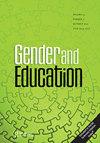Do visual constructs in social science textbooks evince gender stereotypes and bias? A case study from India
IF 1.9
3区 教育学
Q2 EDUCATION & EDUCATIONAL RESEARCH
引用次数: 1
Abstract
ABSTRACT India presents a heterogeneous socio-economic ethos, rooted within structures of patriarchy and caste, rendering any transformation of traditional gender roles, increasingly challenging. Gender socialisation begins in childhood and is assimilated through schools. Students imbibe gender concepts through textbooks and classroom experiences, which either reinforce their social perceptions or influence them to critique inequalities and bias. Adopting a multi-pronged approach through feminist critical discourse analysis (FCDA) and content analysis, this research evaluates the images used in Indian school social science textbooks, for constructs of gender representation, structures, and stereotyping. The research reveals that gender structures depicted in textbooks foster patriarchy and gender bias. There is minimal effort to depict feminist activism and little scope to foster gender reflexivity and social debate, which only sustains stereotypical perceptions of gender roles within Indian society.社会科学教科书中的视觉结构是否表现出性别刻板印象和偏见?来自印度的案例研究
摘要:印度呈现出一种异质的社会经济精神,植根于父权制和种姓结构,这使得传统性别角色的任何转变都变得越来越具有挑战性。性别社会化始于儿童时期,并通过学校被同化。学生们通过课本和课堂体验吸收性别概念,这要么强化了他们的社会认知,要么影响他们批判不平等和偏见。本研究采用女权主义批评话语分析(FCDA)和内容分析的多管齐下的方法,评估了印度学校社会科学教科书中使用的图像,以构建性别代表、结构和刻板印象。研究表明,教科书中描述的性别结构助长了父权制和性别偏见。描绘女权主义激进主义的努力很少,促进性别反思和社会辩论的空间也很小,这只会维持印度社会对性别角色的刻板印象。
本文章由计算机程序翻译,如有差异,请以英文原文为准。
求助全文
约1分钟内获得全文
求助全文
来源期刊

Gender and Education
EDUCATION & EDUCATIONAL RESEARCH-
CiteScore
5.20
自引率
9.10%
发文量
31
期刊介绍:
Gender and Education grew out of feminist politics and a social justice agenda and is committed to developing multi-disciplinary and critical discussions of gender and education. The journal is particularly interested in the place of gender in relation to other key differences and seeks to further feminist knowledge, philosophies, theory, action and debate. The Editors are actively committed to making the journal an interactive platform that includes global perspectives on education, gender and culture. Submissions to the journal should examine and theorize the interrelated experiences of gendered subjects including women, girls, men, boys, and gender-diverse individuals. Papers should consider how gender shapes and is shaped by other social, cultural, discursive, affective and material dimensions of difference. Gender and Education expects articles to engage in feminist debate, to draw upon a range of theoretical frameworks and to go beyond simple descriptions. Education is interpreted in a broad sense to cover both formal and informal aspects, including pre-school, primary, and secondary education; families and youth cultures inside and outside schools; adult, community, further and higher education; vocational education and training; media education; and parental education.
 求助内容:
求助内容: 应助结果提醒方式:
应助结果提醒方式:


